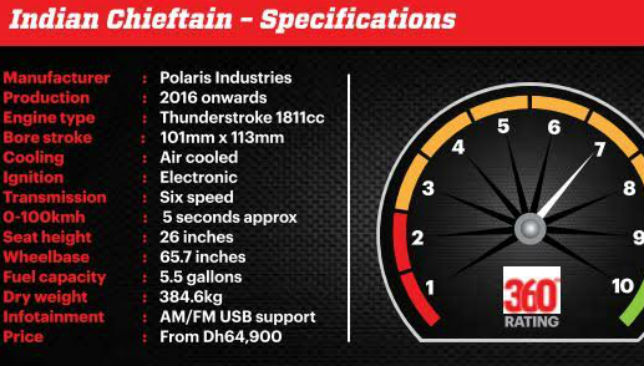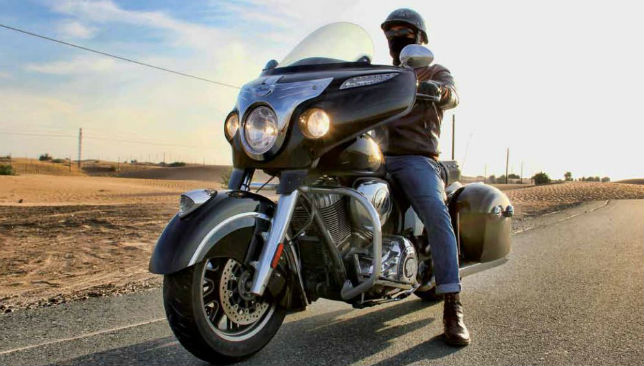
There are two motorcycling manufacturers that throw the word ‘history’ around in their marketing, more than Ivy League colleges: Harley Davidson of America and Royal Enfield of India; and while both have a rich legacy – there is another historic company that churns out sublime machines but still has some catching up to do.
I’m talking about Indian Motorcycle.
Established in 1901, two years before the famous Milwaukee brand, Indian Motorcycle was the largest manufacturer of its kind in America until the First World War. But like it did for the rest of the world, the War had calamitous implications for the company.
Concentrating most of its output to war use, Indian Motorcycle ended up starving its dealers, most of whom turned to Harley Davidson after the fighting was over.
From then on, despite the advent of the popular Indian Scout (made iconic in the modern day by Anthony Hopkins in ‘The World’s Fastest Indian’), Indian Motorcycle never quite recovered until bankruptcy in 1953.
Having changed ownership a few times after this, the future for the once hailed motorcycle brand looked bleak. But they say throw ‘enough’ money at a problem and most of it sticks. So, in stepped the $4.5 billion Polaris Industries who bought the Indian brand in 2011.
Would the company known for making off-road vehicles and the Victory motorcycle brand be able to revive Indian? Fast forward to five years later and all doubts dissipate as I ride out of the Indian Motorcycle showroom in Nad Al Hammar.
Housed in the same dealership as Polaris and Victory, they now occupy prime real estate in the showroom. And it’s easy to see why; with their flamboyant, art deco styling, Indian Motorcycles stand out in a crowd.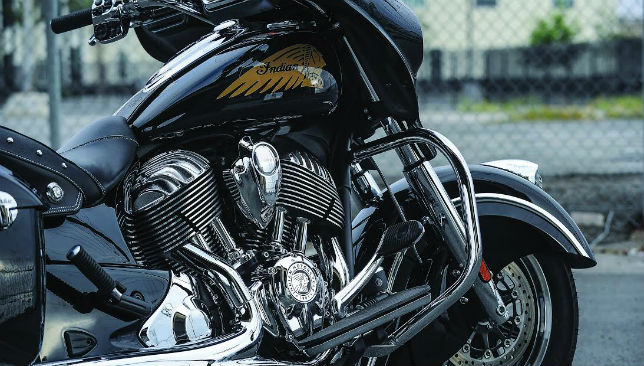
Whether you know about them or not, chances are you’ll gape in wonder at perhaps the most different-looking production motorcycles in the cruiser and bagger segments.
Any good motorcycle is a good motorcycle almost entirely due to its powerplant. And therein lies the recent success of Indian Motorcycle. Polaris Industries had the solid engineering and R&D departments of Victory Motorcycle design the all-new Thunderstroke 111 engine which is fitted on the Indian Chieftain.
And it doesn’t disappoint. The 1811cc beast delivers an immense torque curve so much so that it has the capacity to run really low in the rev range without downshifting because it has no problems whatsoever rearing back up powerfully.
In fact, the Thunderstroke 111 may have been a pretty substantial factor in Harley Davidson developing the all-new Milwaukee Eight 107 and 114 engines, which Sport 360 had the chance to test ride in the American Pacific Northwest.
And then there’s the ride – the Indian Chieftain performs like a freight train disguised in motorcycle garb.
Thanks to its intuitive ride-by-wire throttle, it feels easy to manage despite its bulk even in stop-go traffic. Once your wrists start tiring and the twists start getting snappy, the ECU does a great job of delivering power smoothly.
But the real fun of riding this big rig is when you hit the open highway. The Chieftain gets up to 100 kmh at just over five seconds which is impressive considering its sheer size.
It’ll get to about 60 kmh in first gear, redlining at just under 6000 RPM. Second gear redlines at about 5500 RPM but shift a few gears up and coast along while taking in the scenery and you begin to feel just what the Chieftain is built for – smooth, powerful cruising with marginal vibration.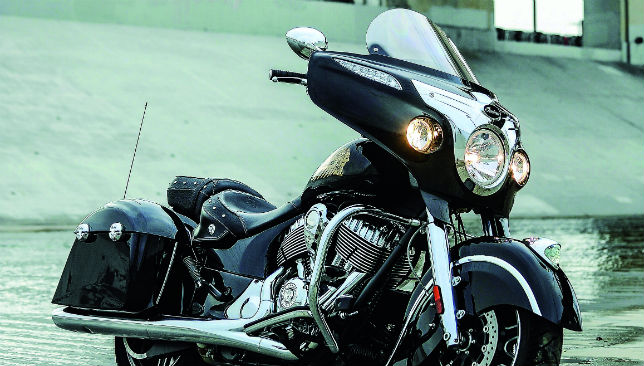
Even in higher gears, it retains and releases enough mid-range torque to make overtaking a worry-free exercise. It possesses a narrower rake of 25°, less than other big Indian cruisers which makes it a little misbehaved in tighter turns.
Although it navigates long sweeping bends with the grace of a plus-size model, a little more input from the handlebars is needed in sharper corners. I found that despite 4.7 inches of travel in the front forks, the impact on the steering jars a bit when you hit ruts or gravelly road.
The rear suspension is a single shock, pre-load adjustable variety but is surprisingly comfortable although not as much as that on a Harley Davidson Street Glide or a Road Glide.
Having spent over 150 kilometres in the saddle, non-stop, I found that I didn’t have a numb backside. This might also be thanks to some very plush leather seats for both rider and pillion. It helps that the engine is mounted in a cast aluminum frame which keeps the weight of the motorcycle down.
The clutch lever has a nice concrete spring to it, but this is a throttle-by-wire motorcycle with its horsepower delivered in a very tactile way at every twist of the wrist, thanks to well configured processing.
Indian Motorcycle claims a torque of 139nm and I wouldn’t be the first to dispute that because for a massive bagger, overtaking was as easy as ‘snap wrist and pass’!
My very slight disappointment in the Chieftain came from the front brakes as, when it’s time to dial in the beast, you have to put a strong squeeze on the lever to get the 300mm dual floating rotors to bite.
The 300mm disc on the rear displays much better response. Compared to its American flame clad rival, particularly a Road Glide whose braking is just amazingly bitey and confidence invoking, the Chieftain could do with more engaging brakes.
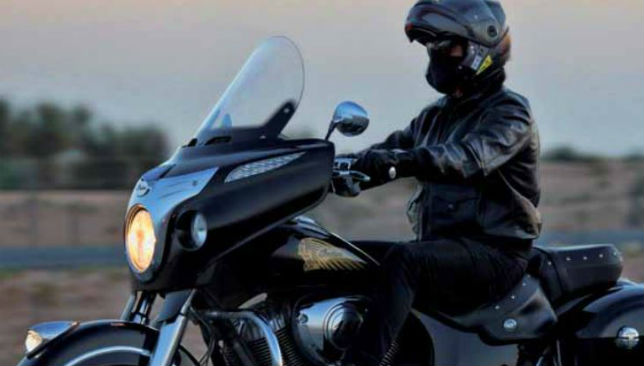
Polaris Industries’ Indian Chieftain (photo by Arunjith S)
Gear engagement is also a tad rough through the first two but from then on is concrete and smooth. It comes equipped with a bevy of electronic comforts such as remote locking saddlebags for starters.
This is a brilliant feature that’s truly appreciated after putting several hundred kilometres in the saddle, dismounting and looking with chagrin at the task of bending down to fiddle with a clunky physical mechanism.
Simply hit the remote button and get your gear out from the 17 gallon saddlebags. If you’re touring
with a partner, this means both of you can fit in two days’ worth of clothes with room to spare.
And then there’s the electronically-controlled windshield which can be raised to offer full wind protection or lowered at just the push of an ergonomically-placed button on the left-hand console.
The ABS and cruise control is activated easily from the right-hand console. Worth mentioning here is the powerful infotainment system which can also be connected via Bluetooth to your smartphone.
Raise that windshield up all the way and you can enjoy your favourite tunes without wind noise. The 100-watt, two-speaker system is great and puts out loud and clear sound with the volume automatically decreasing when you brake and turning up as you build up speed.
The headlight illuminates the dark brilliantly and you have the added comfort of two powerful fog lamps that activate at the touch of a button.
The front fairing, though, large and heavy is fork mounted which, in my personal opinion, is great and makes for much more informed turns than a fixed fairing.
The beauty of the Chieftain isn’t merely aesthetic; the balanced fenders for instance, do a great job of keeping gravel and road spray away. The aerodynamic engine fins don’t just look great but also do a great job of cooling the engine.
The styling of the engine pays homage to the Indian motorcycles of yore, with the detailing on the cylinder heads, the parallel pushrods and the design of its fins. The traditional War Bonnet printed on the tank and appearing as an illuminated emblem on the front fender look stunning and like nothing else on the market.
Polaris Industries have done a superlative job of taking a historical motorcycle marquee and making it a worthy competitor to modern day cruisers and baggers while still retaining the rich engineering and design legacy of Indian Motorcycle.
History is married beautifully to modern-day manufacturing.